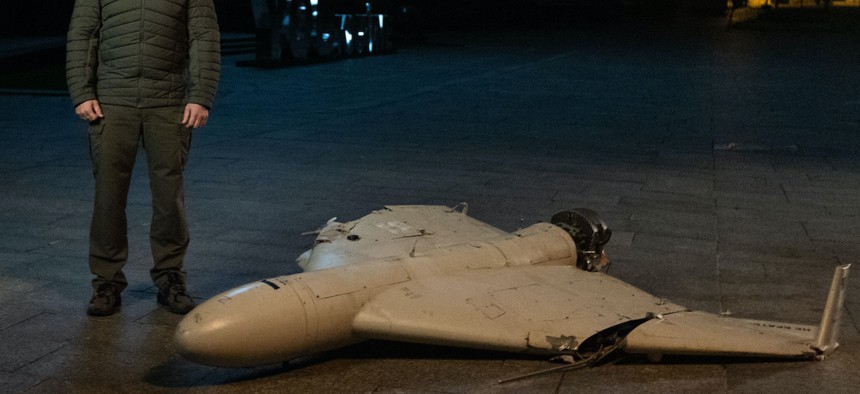RAPHAEL S. COHEN and GIAN GENTILE

As the Second World War turned against the Axis powers, a desperate Germany increasingly pinned its hopes on a series of wunderwaffen—"wonder weapons”—to save it from eventual defeat. These included some of the first cruise and ballistic missiles, which were, for the most part, weapons of terror. Beginning in mid-June 1944, Germany unleashed a barrage of some 6,725 V-1 cruise missiles and 1,400 V-2 ballistic missiles, many of which targeted London, in an effort to break British morale. The campaign caused tens of thousands of British casualties, but ultimately proved ineffectual. Britain fought on.
Three-quarters of a century later, Russia faces a similar predicament. Its invasion of Ukraine has gone badly. With its army increasingly in shambles, Russia has turned to attacking Ukraine’s civilian infrastructure with its own class of “wonder weapons”—in the form of Iranian-made kamikaze drones—in an effort to destroy Ukrainians’ will to fight. These tactics will inflict pain on the Ukrainian population, certainly, but if history is any guide, they will not forestall a Russian defeat.
For starters, Russia has already tried the wonder-weapon tactic, albeit on a more limited scale. In the opening months of conflict, Russia fired about a dozen of its new hypersonic missiles at various targets in Ukraine. If Russia hoped that such a move would shock Ukraine into submission, or deter Ukraine’s Western backers, it failed. Western observers simply took note of the tactic, and fought on.
And unlike the hypersonic missiles, kamikaze drones are not actually all that novel. In the opening weeks of the war, the United States gave hundreds of kamikaze drones to Ukraine to use against Russian forces. Others have employed them as well. Iran, for example, used kamikaze drones to strike Saudi Arabia’s Aramco oil fields in 2019. Even the Islamic State deployed their own primitive version of these weapons. And the basic concept—that a military could crash explosive-laden aircraft into targets—has been around for decades, which minimizes the shock factor of such a tactic.
Moreover, Russia also lacks enough drones or any other wonder weapon to shift the balance of power in the war. Ukraine estimates that Russia wants to buy some 2,400 drones from Iran. Whether Tehran can fill the entire order, and whether all the drones will even work, remains an open question. Even if they do work, the numbers must be viewed in context: Russia fired some 3,000-odd cruise missiles against Ukraine during the first six months of the conflict without dealing a knockout blow. And today Ukraine is arguably a more formidable foe. The Ukrainian military is now by some metrics larger and better-equipped than it was at the outset of the conflict, thanks to Western military aid and captured Russian equipment.
And despite all the hype, these kamikaze drones are not invincible, either. Used en masse, drones—like rockets or missiles—can overwhelm air defenses. But like most flying objects, they can also still be intercepted by anti-aircraft or -missile weapons. Indeed, the Ukrainian military claims to have downed some 70 percent or more of the 300-plus Iranian-made drones that Russia has employed to date.
Above all, Russia’s turn to kamikaze drones is premised on a flawed strategy, one that seeks to punish the population into submission—much like the Germans’ use of the V-1 and V-2. The Russian attacks on Ukrainian electrical infrastructure will undoubtedly impose yet more misery on the civilian population, which must now cope with blackouts and heating shortages as winter temperatures drop. Historically, though, bombing civilians rarely works. Indeed, it often has the opposite effect: angering the populace and hardening positions against concessions. That was certainly the case in England in 1944. And that seems to be happening in Ukraine today. Recent polls suggest that Ukrainians overwhelmingly support fighting on and oppose negotiations, despite the costs.
Wonder weapons do not win wars. Killer drones may capture the popular imagination and evoke fears of some futuristic dystopia. But the battlefield reality is quite different. The Russians are learning in Ukraine what the Germans and many other states have had to learn before them: no amount of technological innovation can save a country from a failed strategy.
The only thing that will stop the Ukrainians from making further advances is the will of the U.S. and its NATO allies and other partnered nations to provide support. If that will is sustained, the Ukrainians seem likely to win.
No comments:
Post a Comment